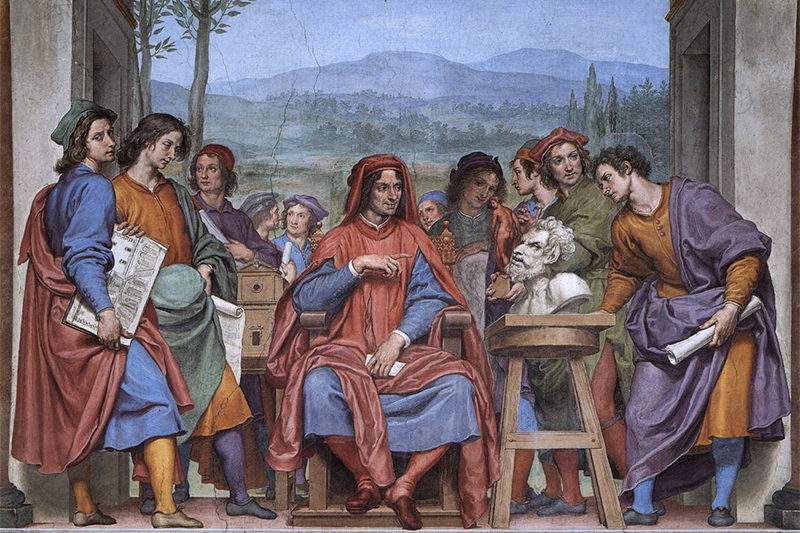Maecenas and Patronage: Exploring the Origin, Meaning, and Values throughout History

A short journey through the cultural and historical evolution of Maecenatism, or patronage, commencing from its Roman “founder”, navigating the pivotal historical turning points, and culminating in its relevance in the contemporary world.
Throughout the annals of human history, the presence of artistic expression has been ubiquitous, commencing from the earliest human settlements and persisting until contemporary times. Regardless of the rudimentary and proto-cultural nature of this expression, societies and civilisations have invariably relied upon them. While art may not directly address the pragmatic demands of human existence, it undeniably responds to a profound, intrinsic need, encapsulated in what the Latins referred to as humanitas.
The manifold and diverse forms of artistic expression uplift the human condition and serve as the pinnacle of human thought and creativity in action. It transcends mere soulful needs and embodies humanity's inclination to pursue abstract ideals or human essence, as Plato would put it. It is the realisation and embodiment of human endeavour.
Furthermore, the historical significance and centrality of artistic manifestation is duly certified by the cultural nexus known as Maecenatism, wherein seemingly disparate spheres such as culture, politics, art, and economics converge. Maecenas, an influential 1st Century BCE Roman politician and advisor to Emperor Augustus, recognised the imperative of nurturing, safeguarding, and supporting art as a vital instrument for societal progress.
Through his patronage of poets such as Horace and Virgil, Maecenas instigated the trend of patronage, an economic-artistic enterprise that afforded artists the liberty to express themselves freely and attain visibility for their works.
This culture of patronage experienced a zenith during the Renaissance era, particularly within the Italian context. Notably, Florence, with illustrious patrons like Cosimo the Elder and Lorenzo the Magnificent of the Medici family, witnessed widespread support extended to numerous artists, including renowned figures like Botticelli, Leonardo da Vinci, and Michelangelo. Notably, several courts during the 15th and 16th Centuries engaged in patronage. For instance, the Este family of Ferrara protected esteemed writers like Ariosto and Tasso, while the Gonzaga dukes of Mantua played hosts to renowned artists such as Piero Della Francesca and Mantegna. These courts were prominent examples among others during that era.
The Renaissance was not a mere coincidence; it was fuelled by a profound cultural shift known as humanism. Humanism entailed a radical departure from the medieval worldview, which centred on God and divine providence. Embracing the motto home faber ipsius fortunae suae [everyone is the artisan of their own fortune], humanists emphasised humanity's central position in the world, celebrating our superior intellect and remarkable creative abilities.
Art, being the epitome of human excellence, holds a unique power to create from nothing, mirroring God’s creativity. This ability to resemble the divine despite our human nature may well be the essence of art's magnificence. It is precisely true because we are human, capable of such extraordinary feats.
As we progress into the modern-contemporary era, patronage endures as a vital principle, albeit with evolving modes and expressions. A pertinent illustration of this lies in the case of the Russian collector Sergei Ivanovič Ščukin, who took under his wing Henri Matisse, a prominent figure of the Fauvism art movement. Similarly, Peggy Guggenheim's US gallery embraced collecting endeavours that enabled her to acquire works from significant avant-garde artists, while also providing crucial support to creators like Duchamp, Max Ernst, and Pollock.
Against this backdrop, Cinello emerges as a contemporary exponent of this humanistic vision, operating at the intersection of art and technological innovation. Its primary objective is to bridge the gap between the art world and technological innovation, giving rise to a fresh and innovative collecting approach. Through this endeavour, Cinello not only enriches artistic heritage but also provides vital backing to museums and public institutions within the art realm. Moreover, this entrepreneurial initiative holds the potential to globally showcase and propagate Italian artistic heritage, facilitated by the invaluable support of private foundations.
This ushers in a fresh approach to savouring, reflecting upon, and valuing art — an innovative form of patronage inspired by the notion that if art were deemed meaningless, the same should paradoxically apply to humanity itself.